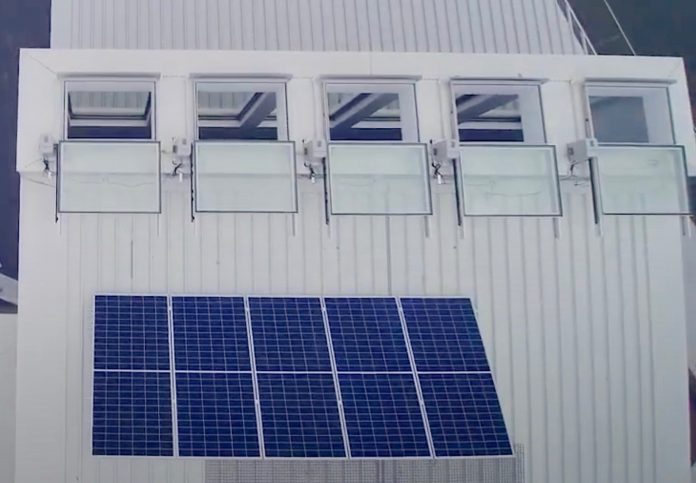Solar chimneys are an under-appreciated and underdeveloped passive solar heating and cooling technology. A collaborative project between RMIT University and the City of Kingston has sought to reverse this state of affairs, and more power to them. After all, the U.S. Department of Energy estimates 19% of the world’s energy resources are used up in heating, ventilating, and cooling.
Solar chimneys are able reduce energy usage by up to 50%, and the particular project developed at RMIT maximises efficiency in both ventilating fresh air and sucking out smoke in the event of a fire.
“Our research demonstrates that solar chimneys offer powerful benefits for both people’s safety and the environment,” says Dr Long Shi, Australian Research Council DECRA Fellow at RMIT, who hopes the research’s dual-function findings will inspire more investment and development in solar chimneys worldwide.
Kingston City Council is an example of one such early investor, the Council was looking for innovative ways of reducing energy consumption in building design and took a punt on the solar chimney for its new Mentone Reserve Pavilion. Kingston Mayor Georgina Oxley called it a “truly remarkable design.”
How It Works
Everybody knows two things about hot air, it rises, and politicians are full of it. Perhaps the former explains the latter. Regardless, it is the fact that hot air rises which a solar chimney uses to its advantage. The sun warms a heat absorbing black painted wall inside the chimney which in turn warms the air inside the chimney. Vents at the top and bottom of the chimney control the airflow for either heating or cooling of that air. When the hot air rises to the top of the chimney it is ventilated out and cool air is drawn in at the bottom, the cycle operating the cool the building naturally.
In turn, when the temperature outside is cold, the chimney can be closed and the captured heat is then directed back down into the building. With a design so elegantly simple it is nothing short of simply elegant. And as such, it is cheap to retrofit or incorporate into a new build.
No One Left Behind
RMIT’s modelling shows that the solar chimney extends the safe evacuation time of a building from approximately two minutes to over 14 mintues. 14 mintues is a long time by any measure, the average YouTube video is just under 12 minutes, so if a fire broke out in your building with a solar chimney, don’t worry, watch the next video then leg it.
Although, it should be mentioned that the 6-fold increase in safe evacuation time is a statistic specific to the Mentone Reserve Pavilion, but there is a history of research, including research performed by a team from RMIT’s School of Engineering, which attests to the ventilating and smoke exhausting capabilities of solar chimneys.
In much the same way as the solar chimney exhales hot air, so too does it suck smoke out during a fire, ensuring better visibility, lower temperatures and reduced carbon monoxide.

“This will differ from building to building,” said Shi, “but we know that any extra time is precious and improves fire safety, which could ultimately help to save lives.”






